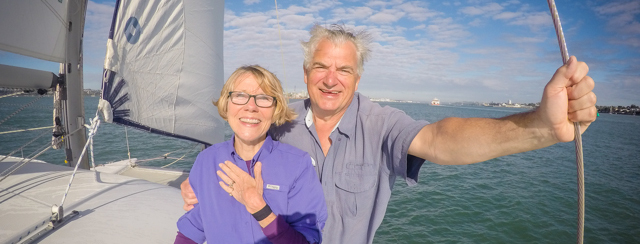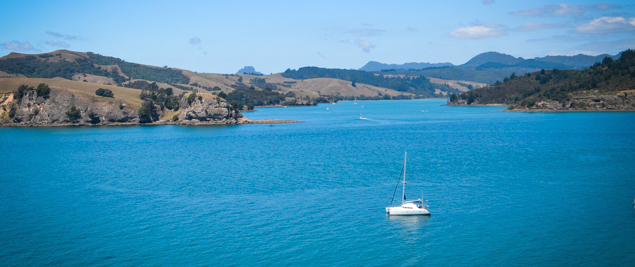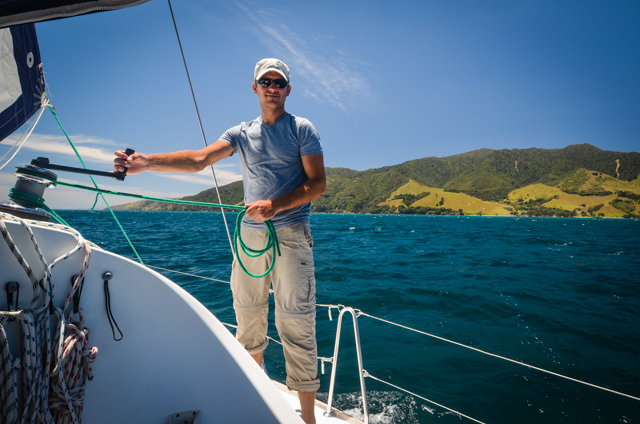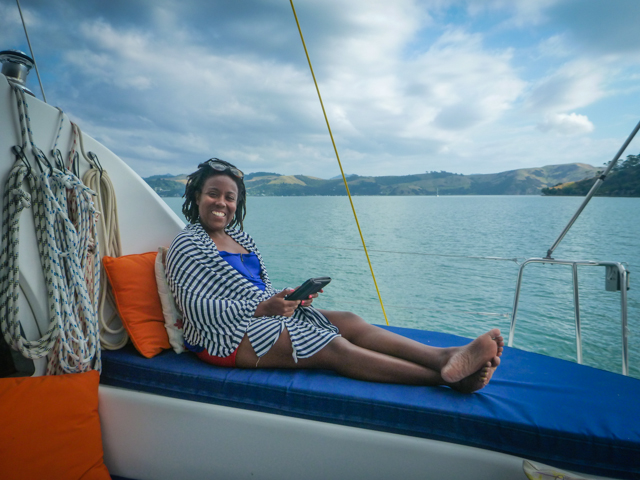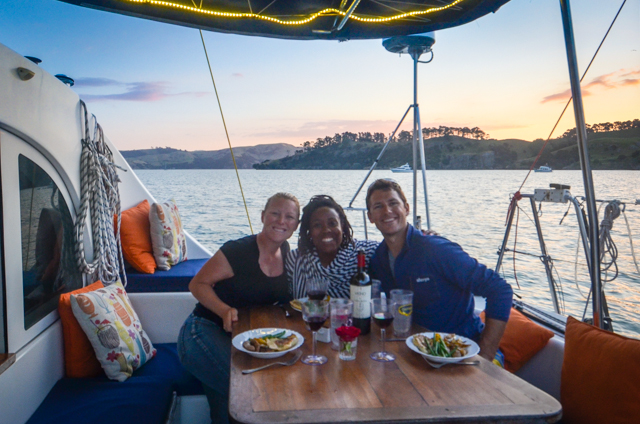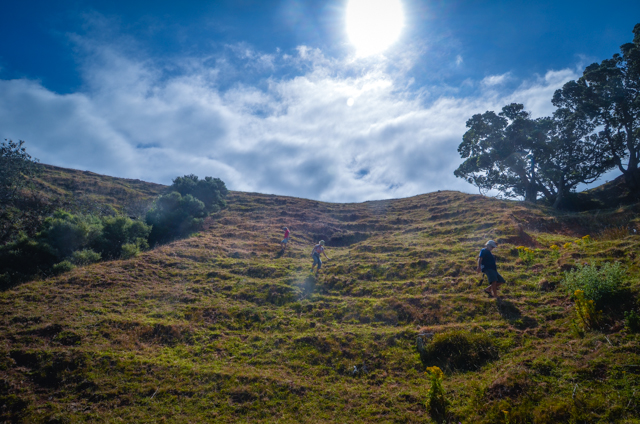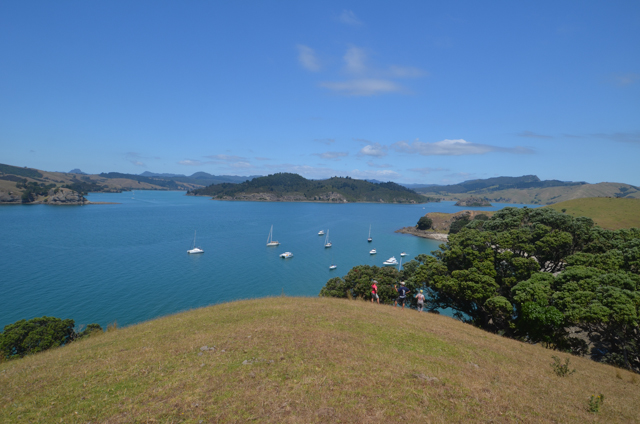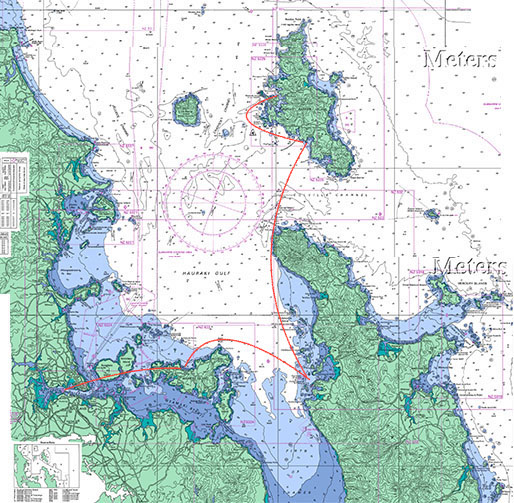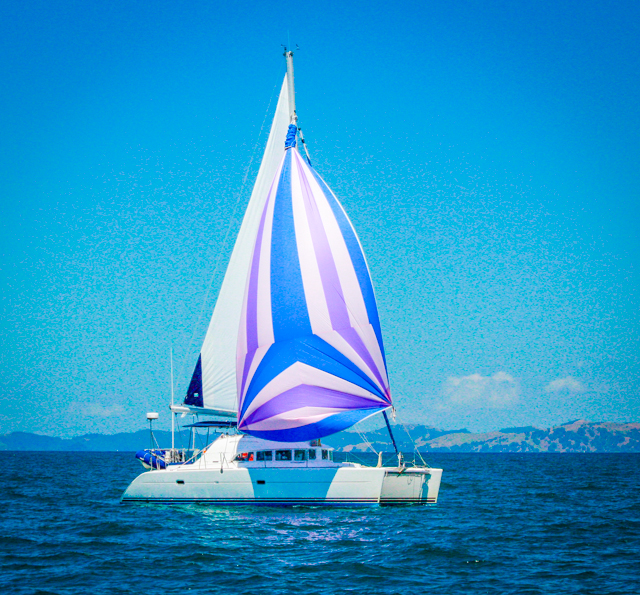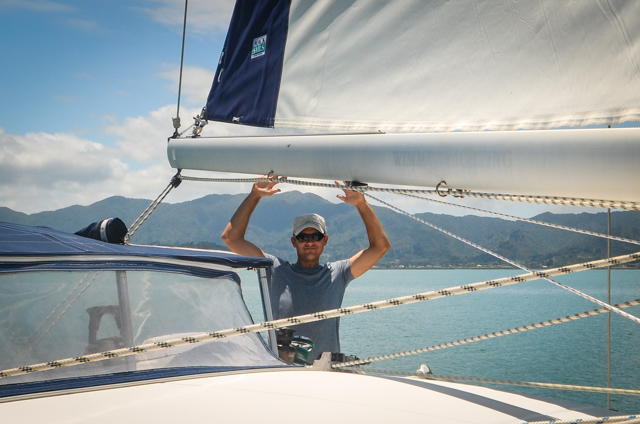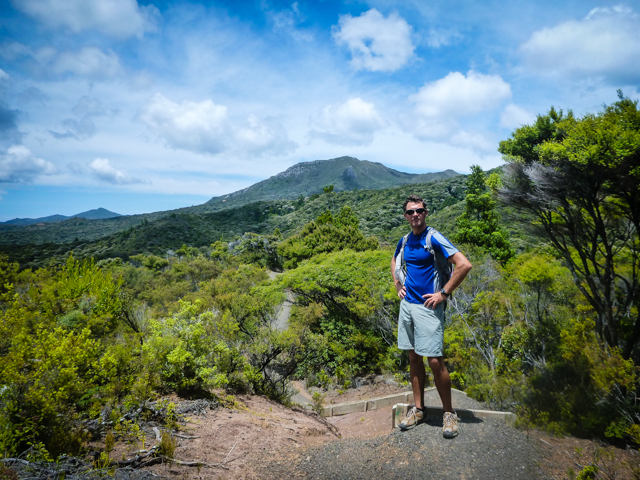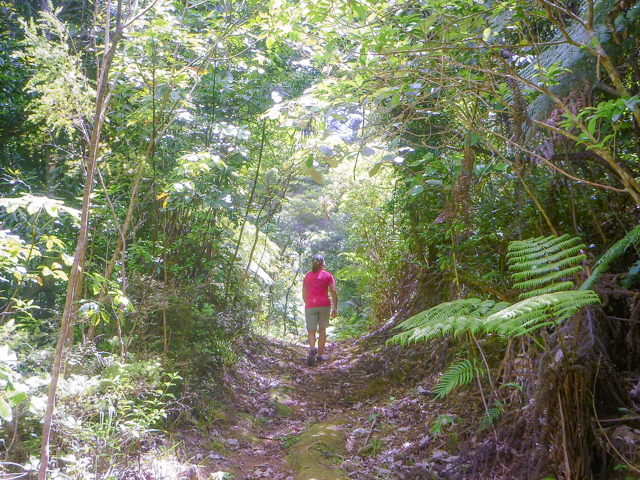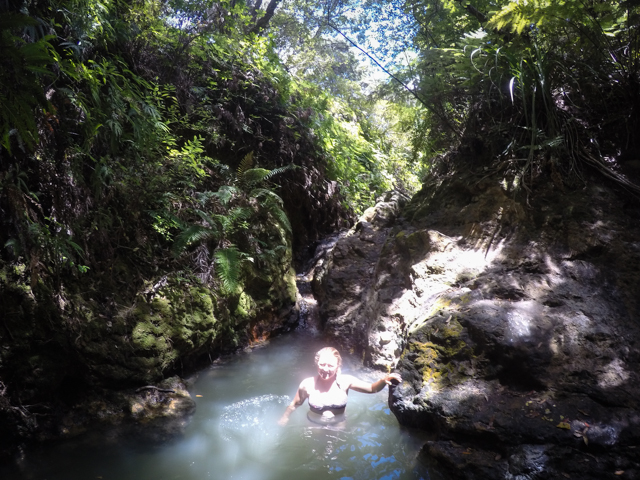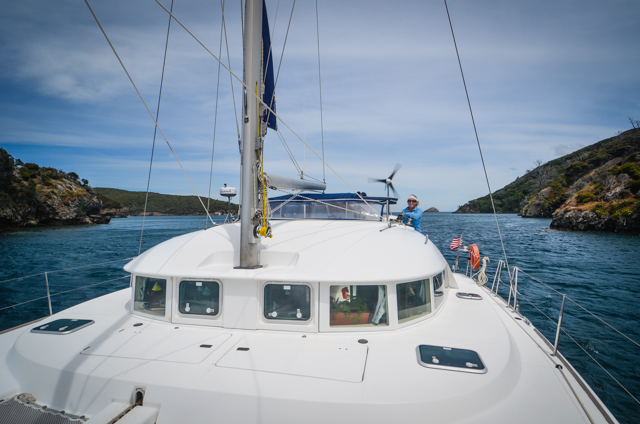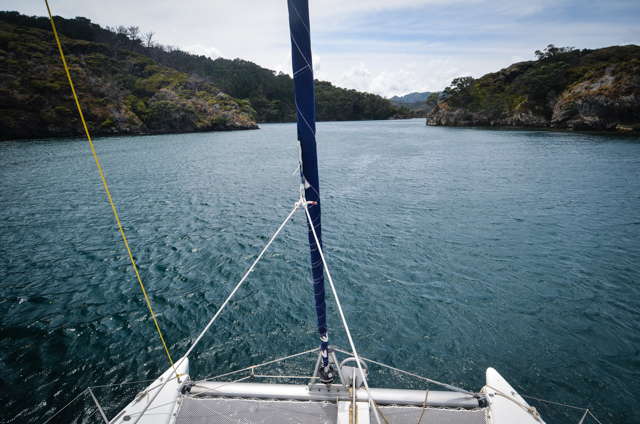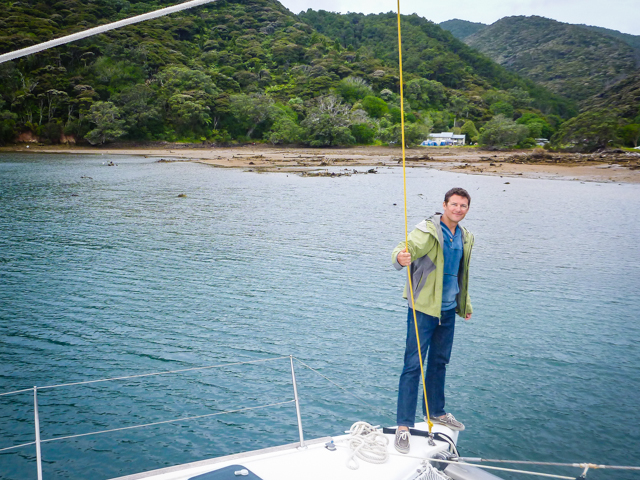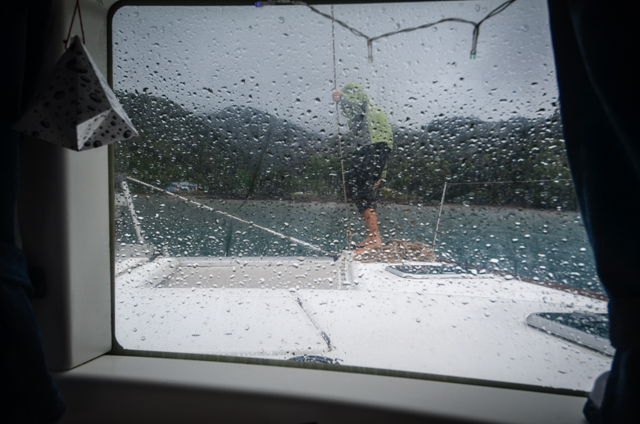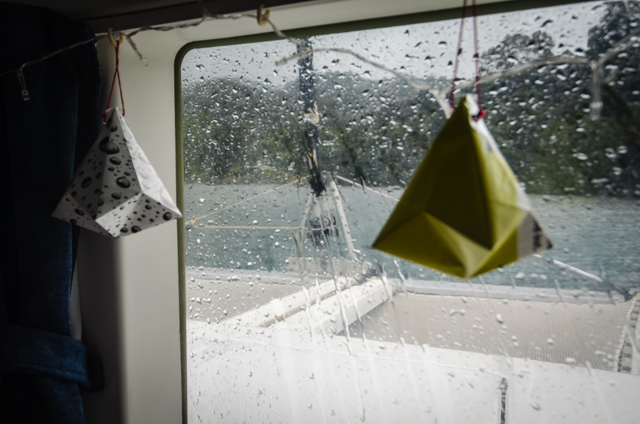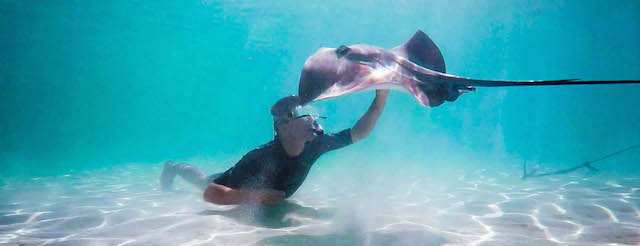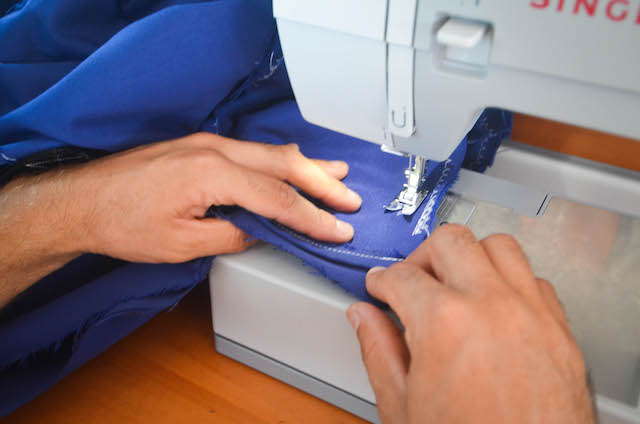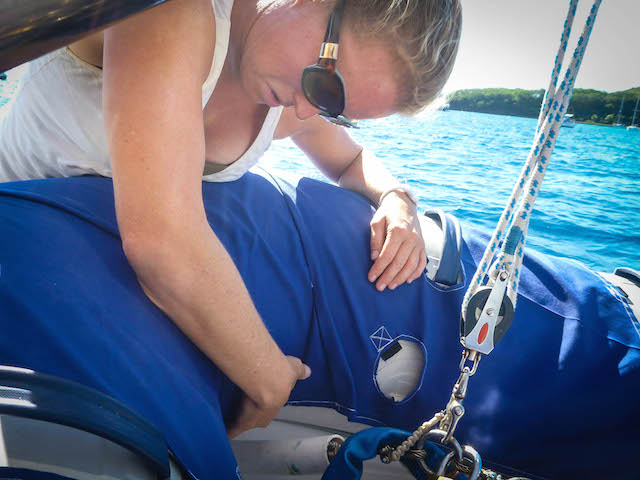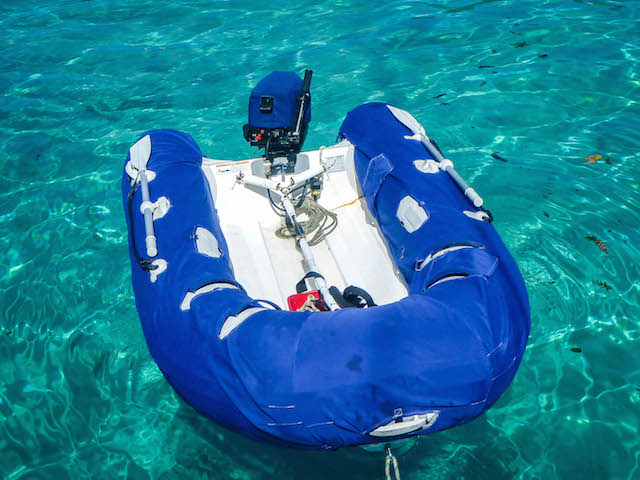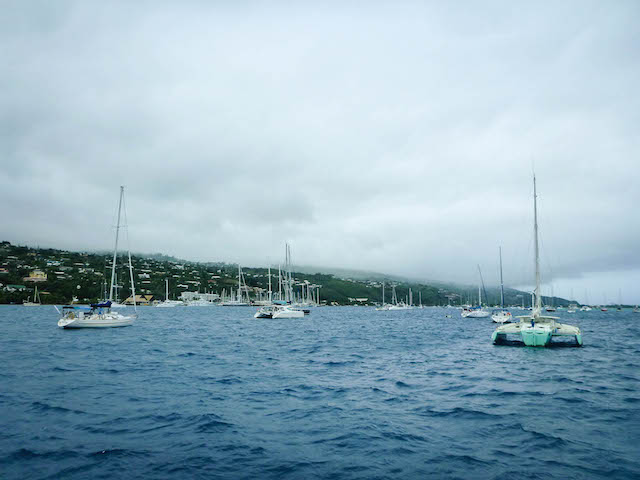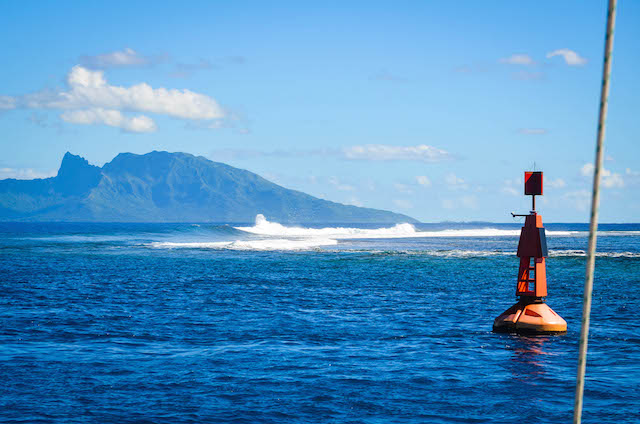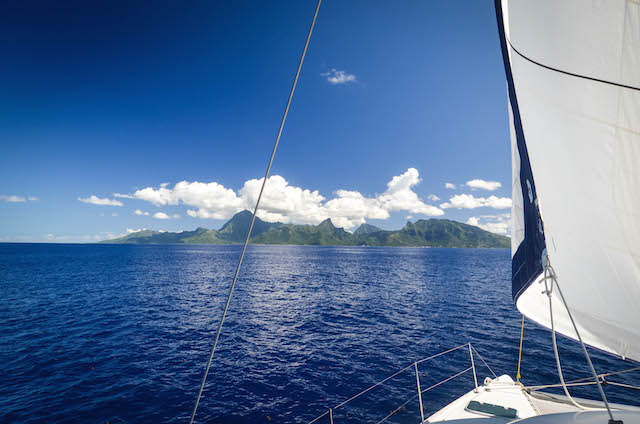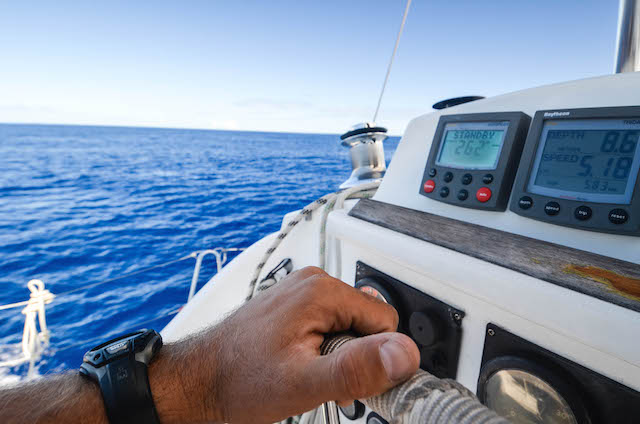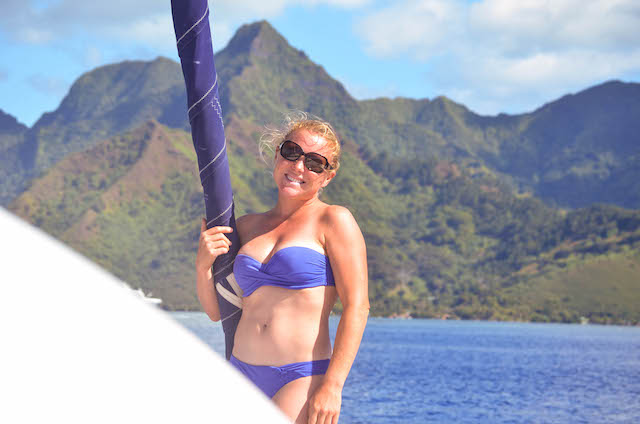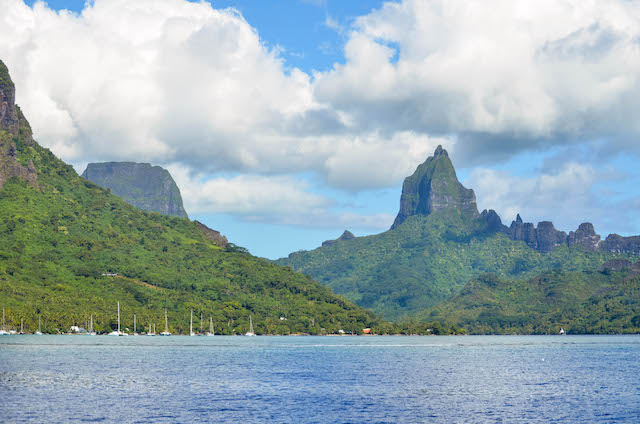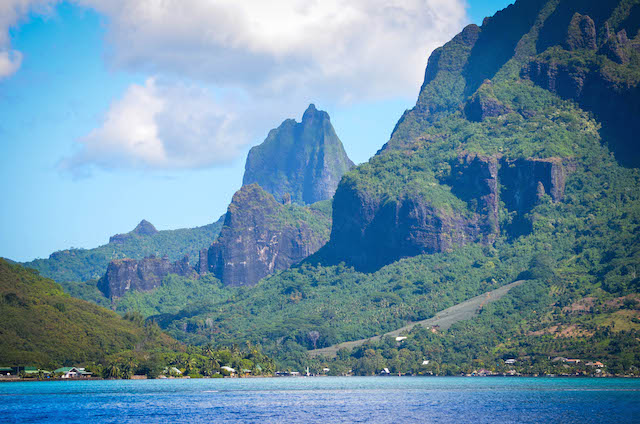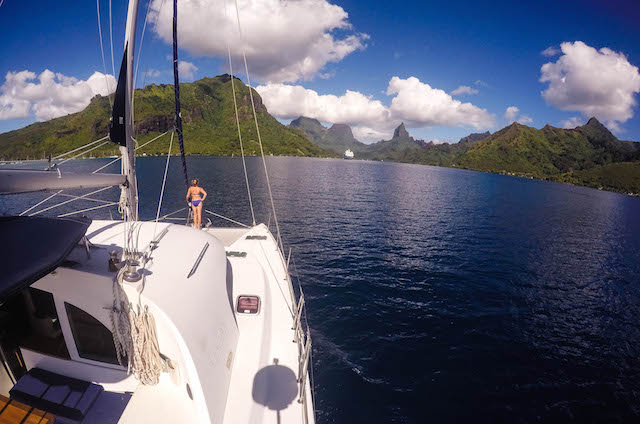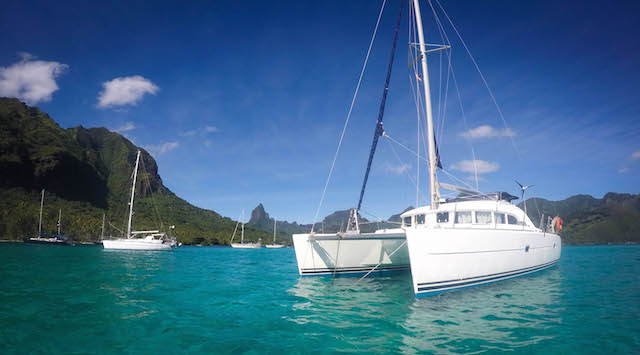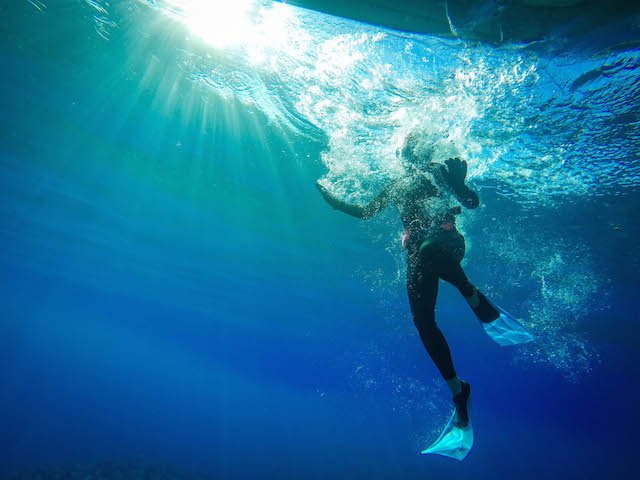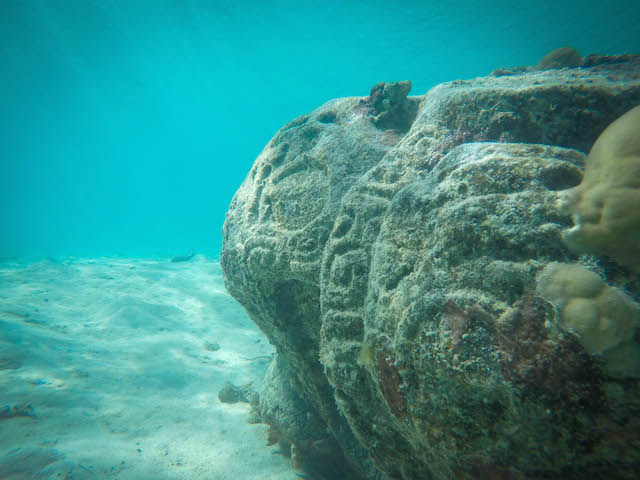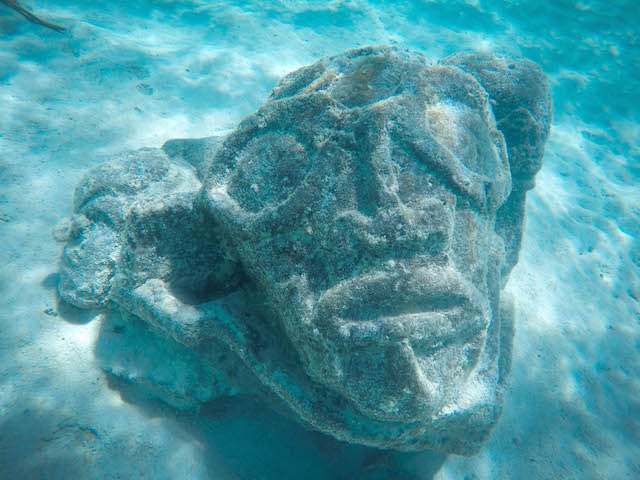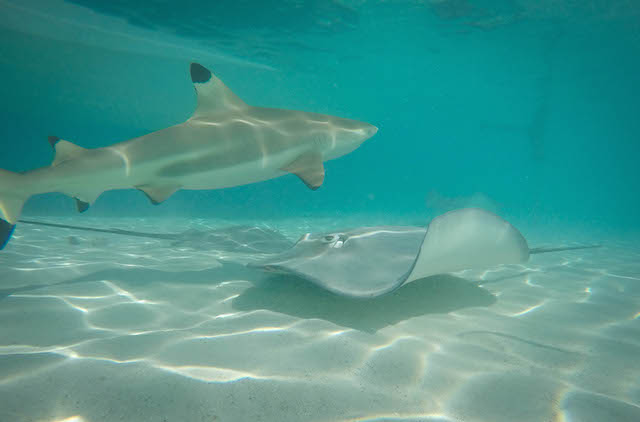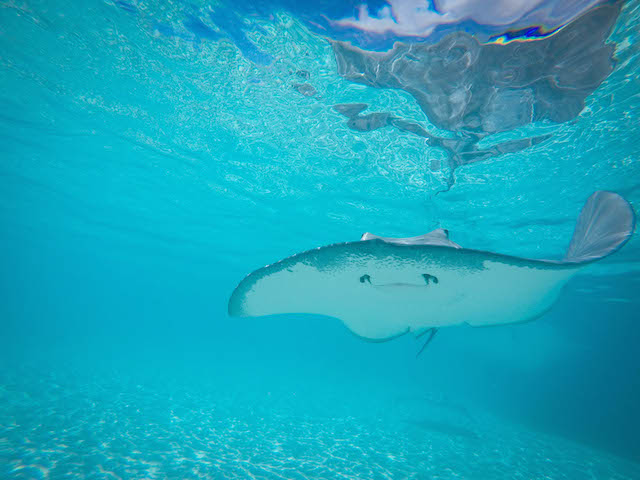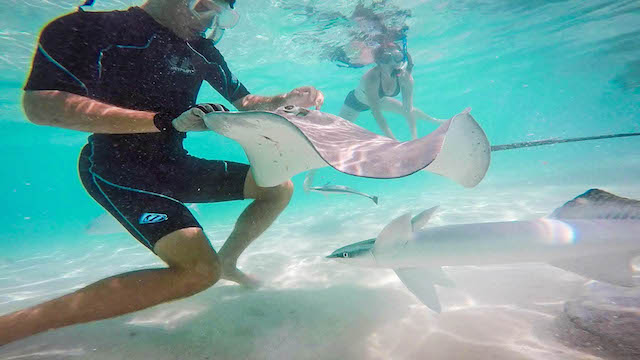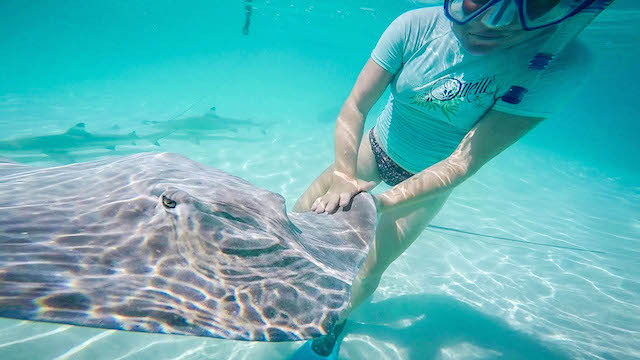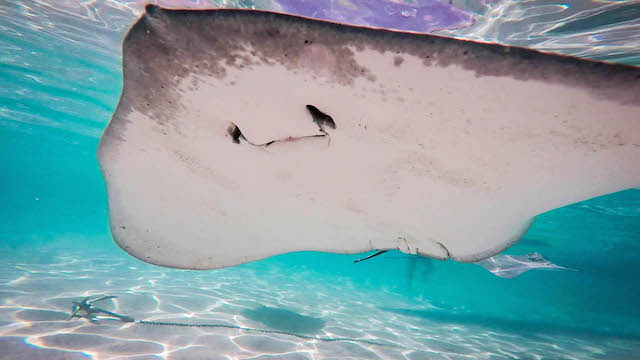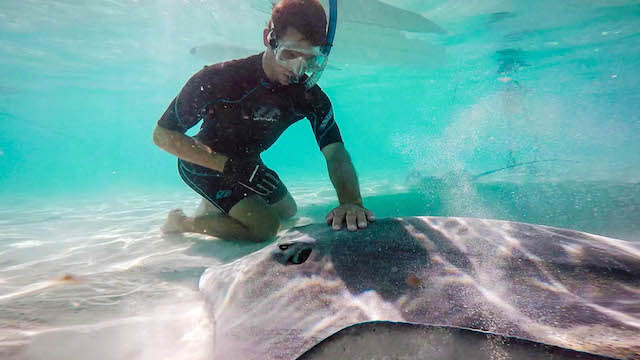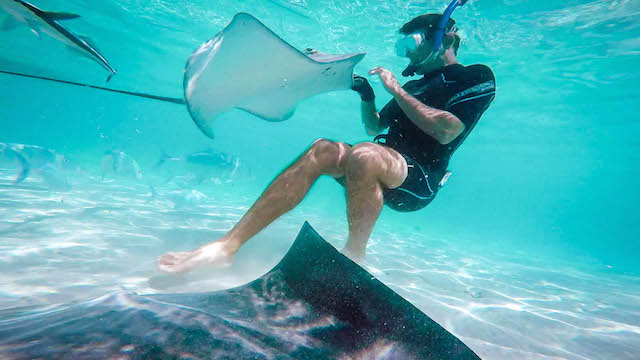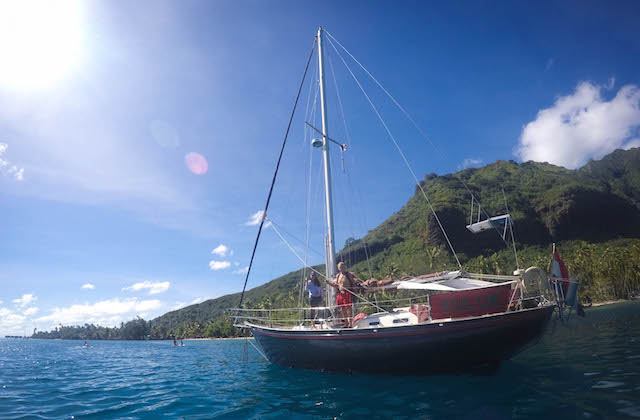Author: Pete
Location: North Island, New Zealand
My folks had been on the move for several days by the time Miranda and I picked them up at the airport. They had spent a few days in San Francisco en route to break up the Chinese Checkers game one is required play to get to New Zealand. They shouldered the jet lag admirably as we explored Auckland the first few days. Muriwai beach is a short drive away and we got out body surfing to wash off some of the road dust. Gannets nest on the cliffs around the beach and there are paths where you can look down on their colonies, which look like egg cartons with evenly spaced pits and bumps. Curiously, the birds lay their eggs on the bumps, which seems difficult to keep an egg balanced on the top of. It must be stressful for the adult gannets, keeping their little fluff-ball offspring from rolling off the precipice like a tumbleweed in the sea breeze. I’m sure my parents identified with their plight in trying to keep their brood out of danger…
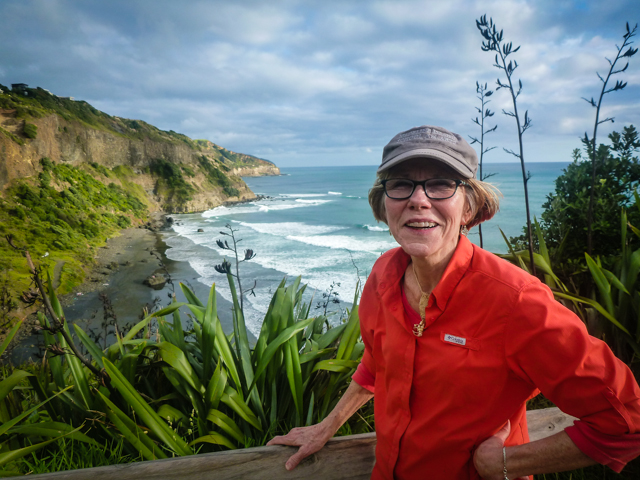
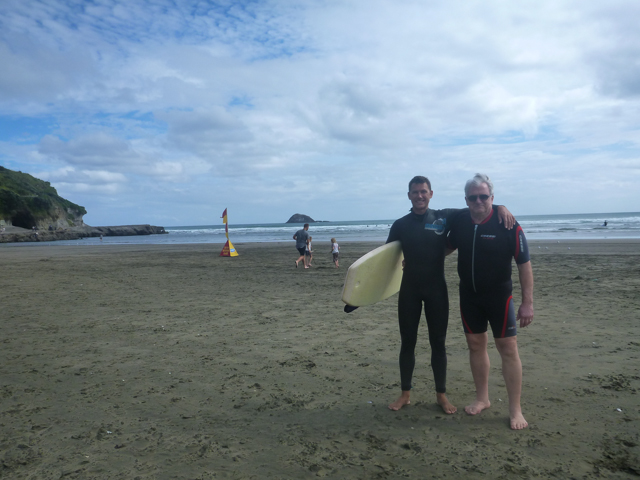
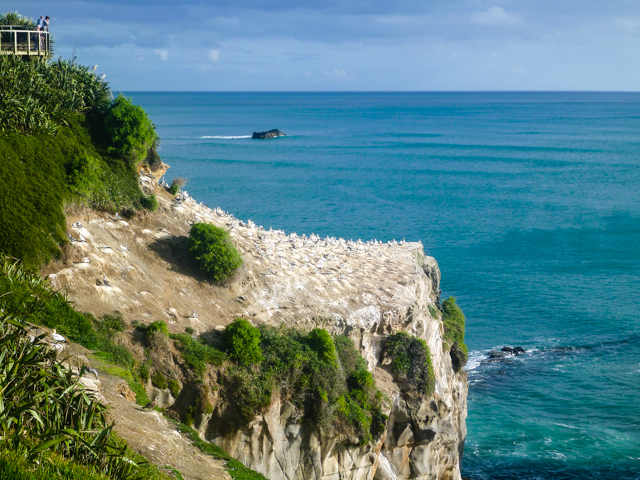
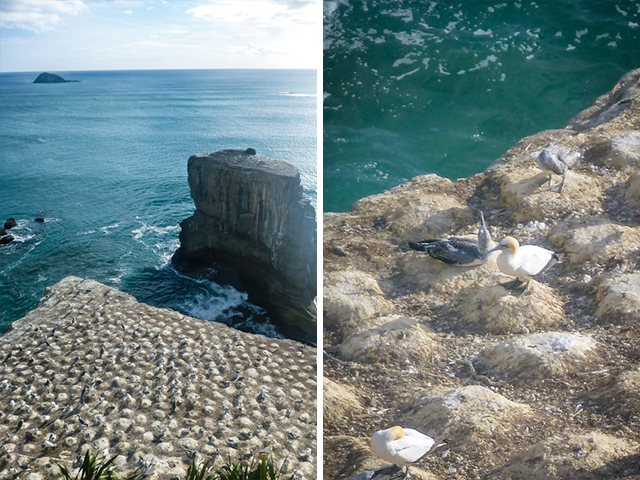
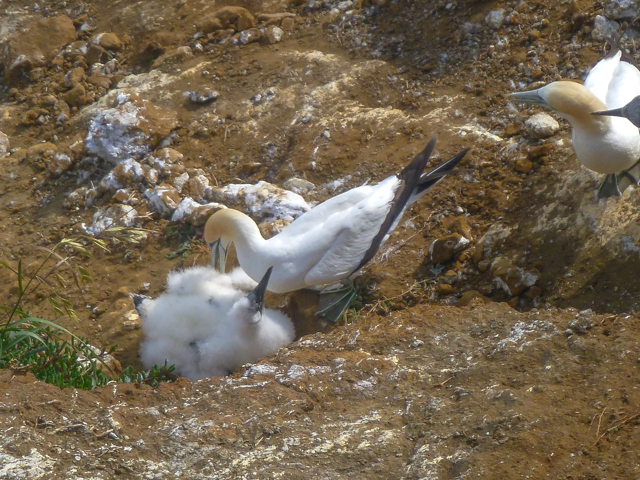
Miranda and I had been planning a little road trip to see some of the countryside with my folks, and after a few days in Auckland we drove south down the wrong side of the road. The first day found us Waitomo, a rolling land riddled with deep caverns, most of which are inhabited by alien life. In the blackness, glow worms cling to the cave ceiling wielding blue-green luminescent tails. Their otherworldly light attracts cave insects, which are caught in sticky hanging filaments before being devoured by the worms. I was glad they were only a few inches long. Nothing worse than being eaten by carnivorous, glowing worms.

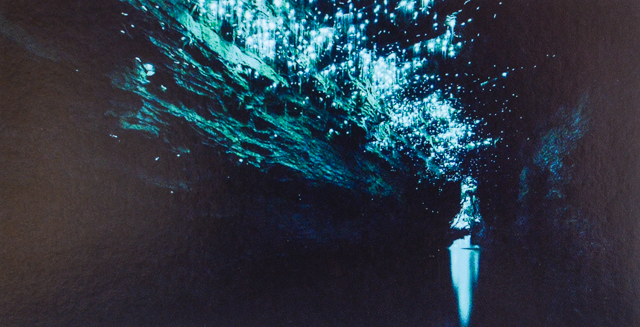
The bioluminescence attracts not only prey, but also gaggles of tourists. We weren’t able to resist. Guides lead oglers into the earth along dimly lit catwalks and cathedrals, and it feels a little touristy until the boat ride. In small groups, we were ushered onto metal boats. After each boat filled, it disappeared silently into the dark. The crafts are pulled along by shadowy boatman along a series of ropes strung throughout the cave. In the darkness, the collective titter of the group stops completely. Not a ripple nor a sigh is to be heard; it is what I’d imagine a journey across the river Styx to be like. To make it more surreal, the glow worms blaze away on the ceiling above, blue-green, spreading out like galactic clusters. The webbed structure of their colonies reminded me of images brought back by the Hubble Space Telescope. It’s quite a trip. Eventually the boat emerges from the gloom and everyone disembarks, blinking in the light and quieted by the experience. Photography isn’t allowed in the caves to protect the glow worms and the unique experience- a couple of these shots aren’t ours.
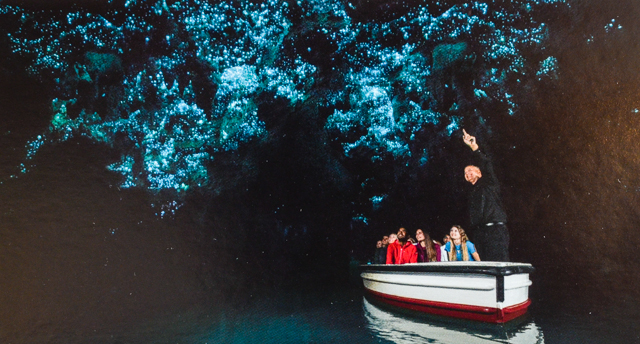

We spent a few hours in the Otorohanga Kiwi House & Bird Sanctuary, which has several live kiwis in circadian-inverted enclosures. The habitats are made dark during the day so visitors can see the nocturnal birds, helpful if you don’t want to spend the night in the bush with night vision goggles. Leave that noise to the military spooks. Aside from the star kiwis, there were flocks of other interesting avians in the sanctuary, some quite friendly indeed.
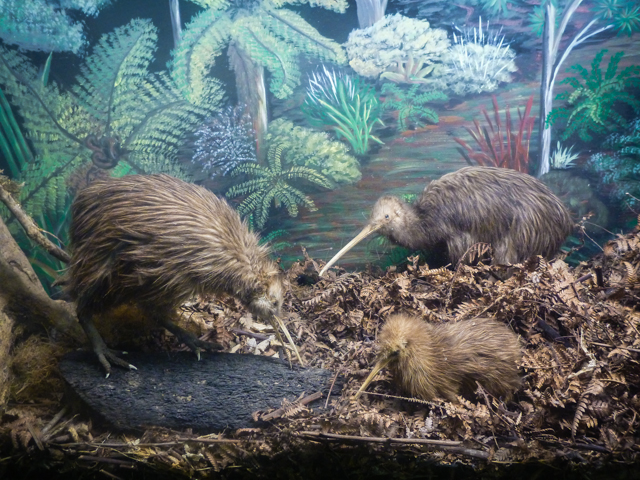
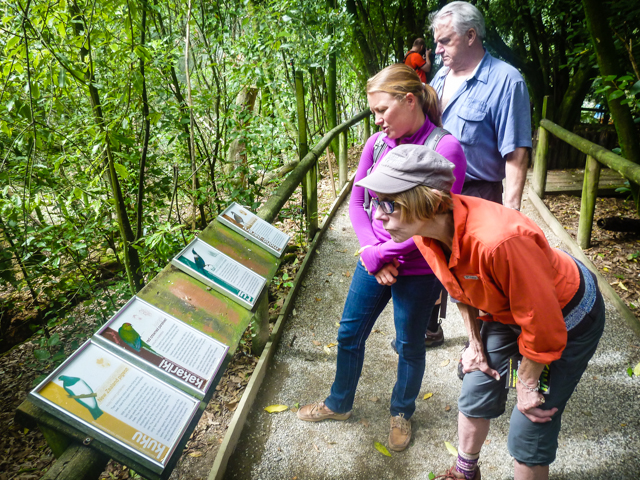
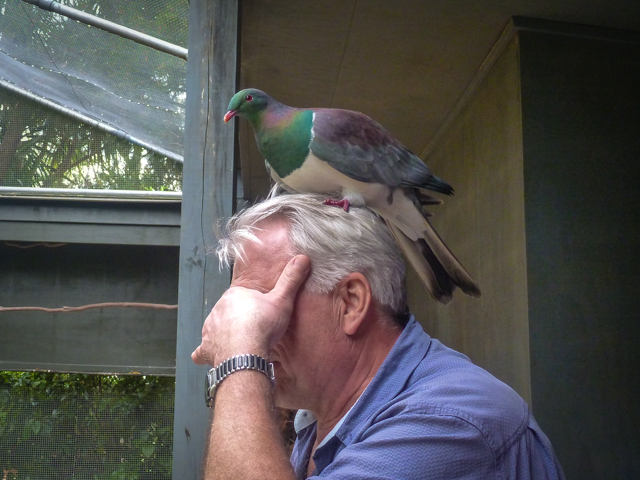
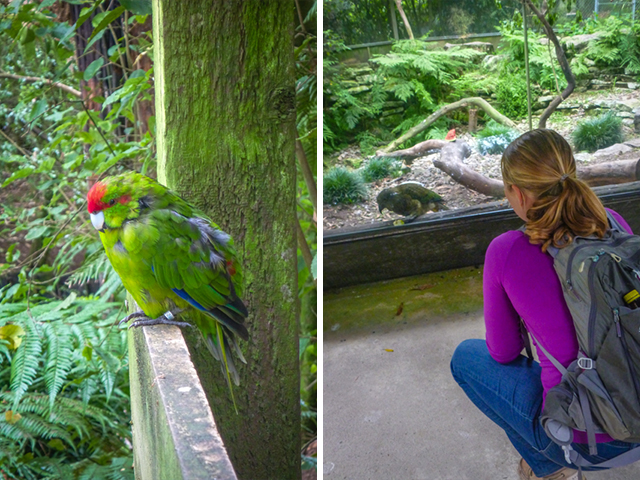
New Zealand has fantastic short hikes everywhere you go. Between Waitomo and Taupo, our next point of call, we explored some great hiking tracks. We wandered through tree fern forests one day and to alpine cascades the next.

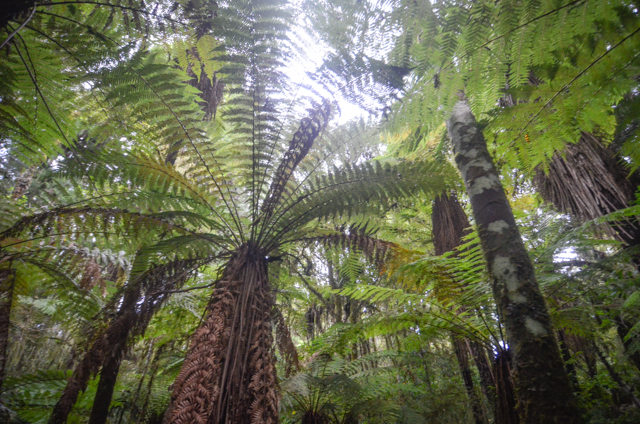


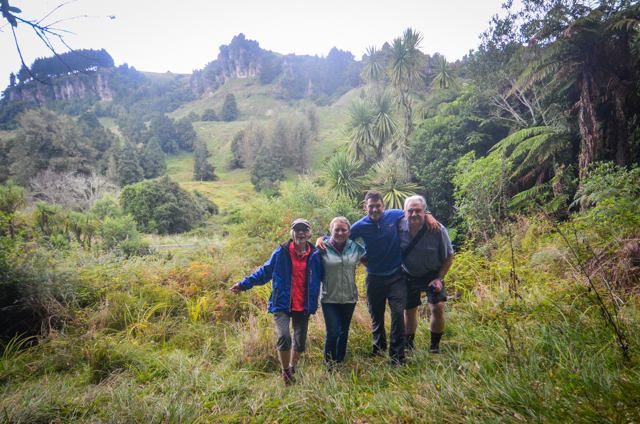

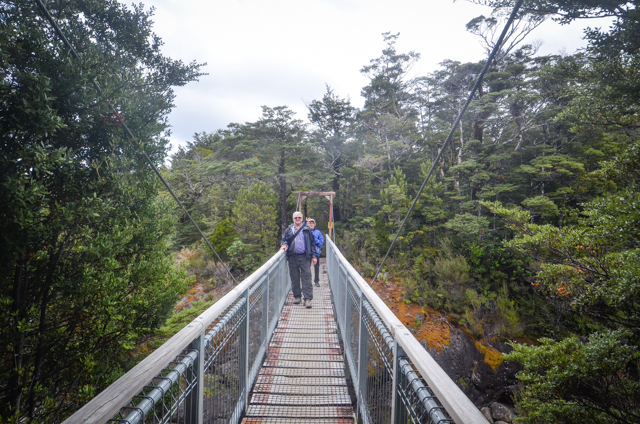
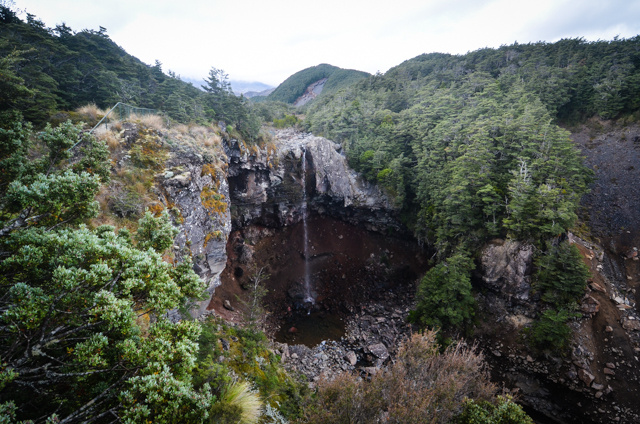
The short hikes were a good warm-up for us in preparation for the Tongariro Alpine Crossing. The approach to the volcanic massif is through rolling steppe covered in tall grasses. The day-long trek starts by following a wide river valley, then up rocky switchbacks to a saddle between a pair of peaks. It was a bit of a slog for our withered boat legs but worth the effort for the views.
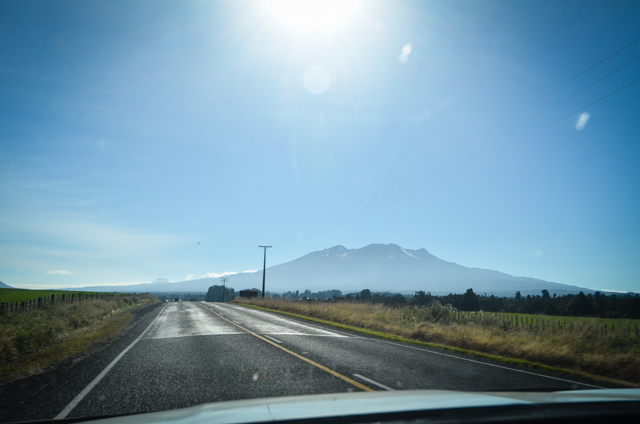
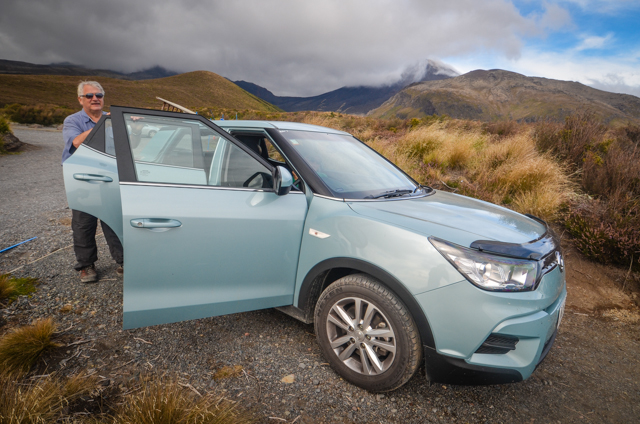



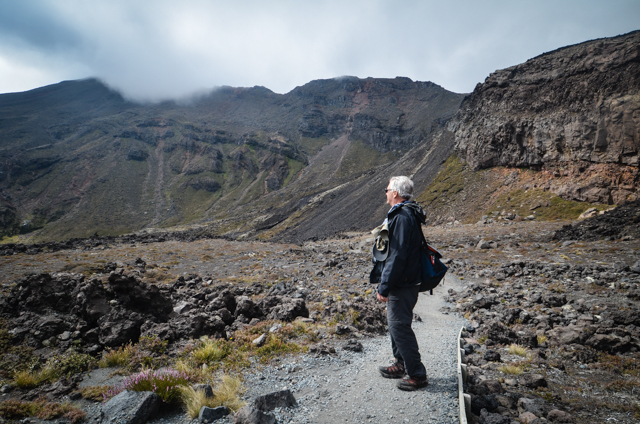
The following day, we drove to Rotorua, the geothermal capital of New Zealand, and stopped to soak our achy legs in Kerosene Creek. Some springs are often lukewarm, but the whole rushing river is hot hot! At the end of a dirt road, a short walk leads to a waist-deep pool under a short waterfall. Steam rises from the churning falls and obscures the overhanging trees. Rotorua feels a little touristy, but Kerosene Creek is still a quiet, local swimming hole. Aside from a little grit in the swim trunks, you couldn’t ask for a more perfect hot springs experience.
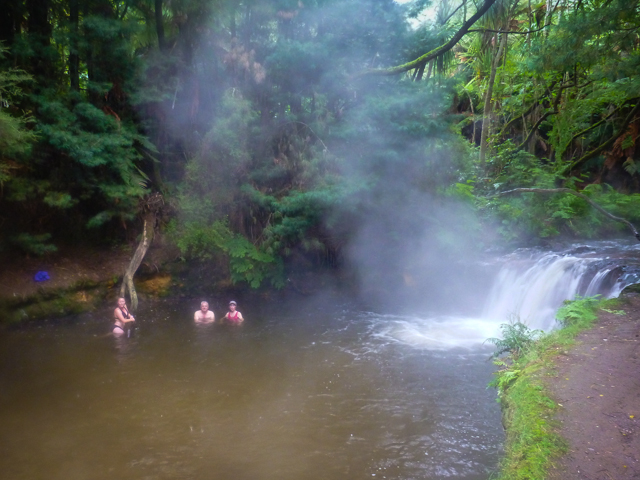
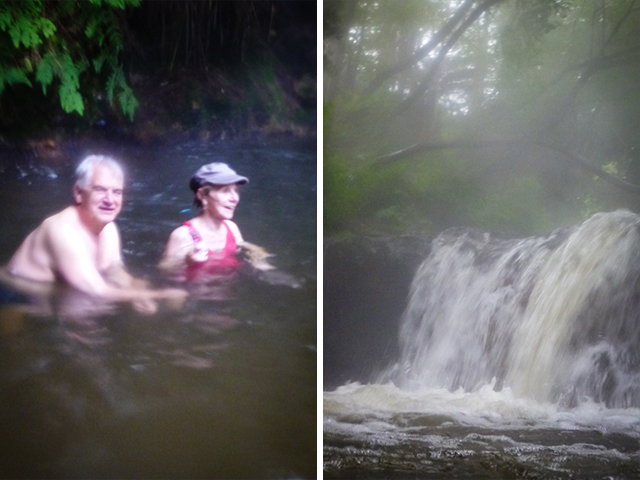
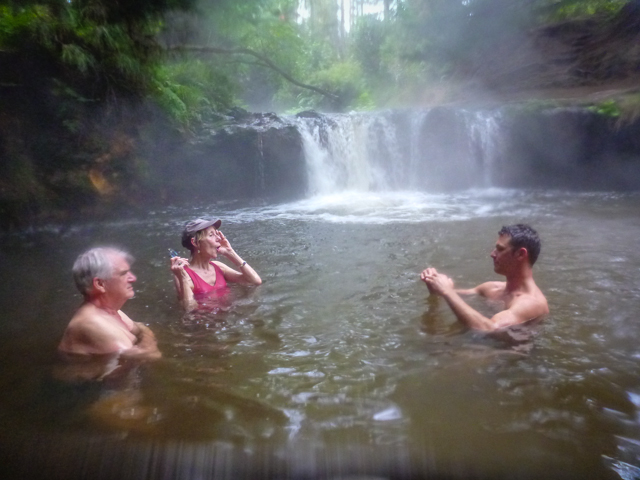
The plan was to explore Rotorua’s geothermal parks but the weather was delivering the deluge promised by the forecast. We calculated that a sunny day on the boat was better than a rainy day in a car, so we left a day early to get back to the good weather around Auckland. After a brief provisioning, Tayrona rode the ebbing tide out into the Hauraki Gulf. We spent a night in Oneroa and then Hooks Bay on Waiheke. The weather was fantastic, and we caught a few kahawai. They put up a good fight. Kiwis describe them by saying they “punch above their weight class.” I like that. We also harvested swarthy green-lipped mussels which we made into fritters.
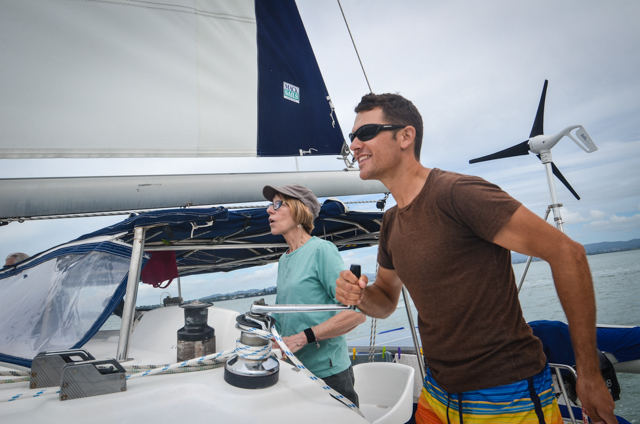
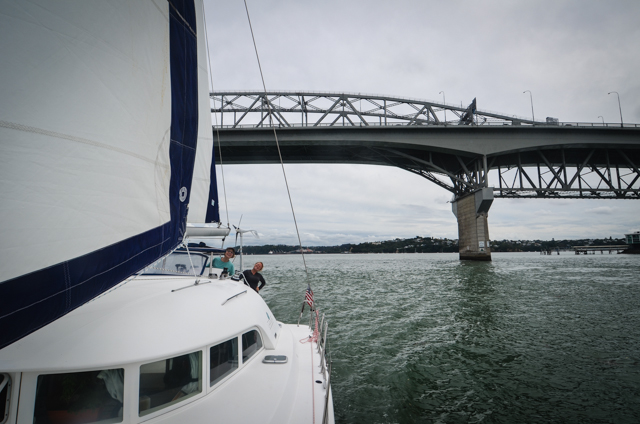
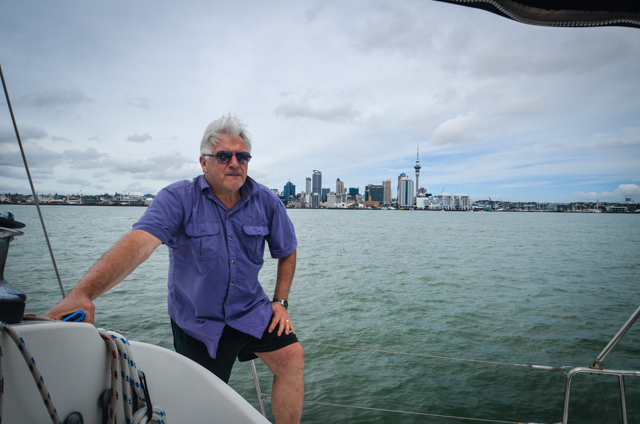
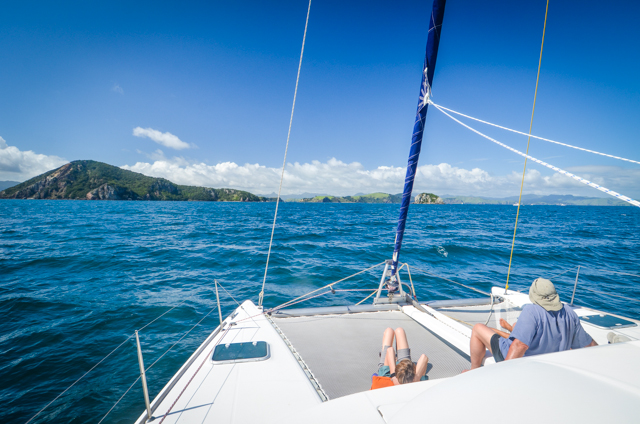

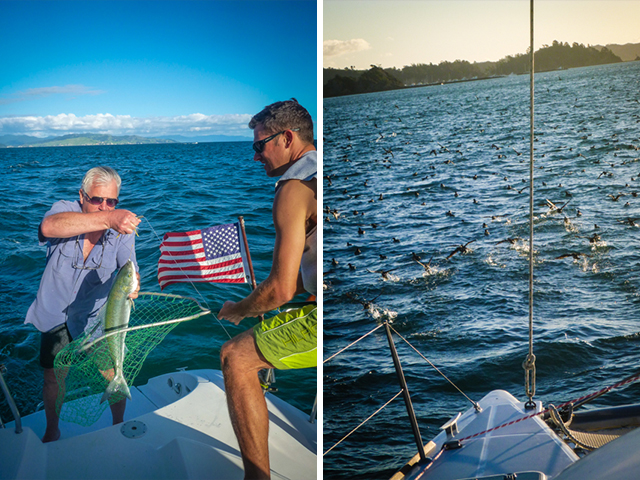
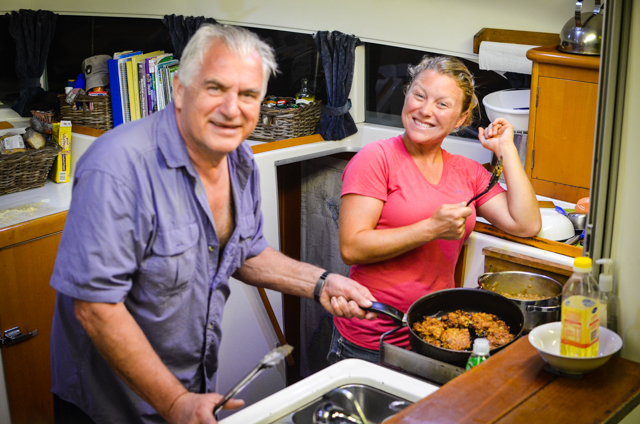

Tayrona carried us fifteen miles east to Coromandel peninsula to find the fruitful scallop beds off of Motuwi Island. My dad and I dove for the tasty mollusks until the current threatened to blow us out to sea. We raked in a good dozen or so and then sailed to Chamberlains Bay on north side of Ponui Island where we celebrated our hoard like pirates after a raid. The night was cloudless, and we slurped garlic scallops under star-encrusted skies.
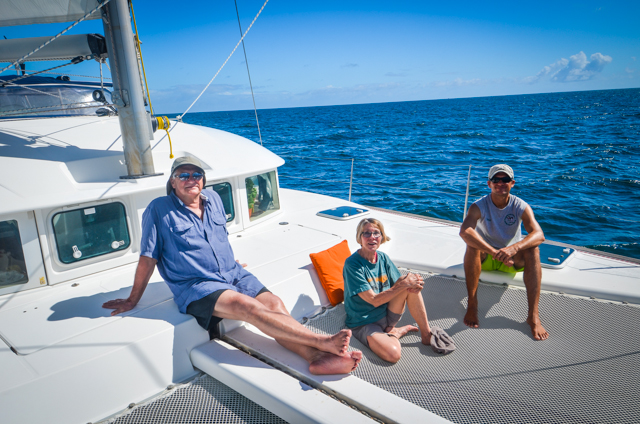

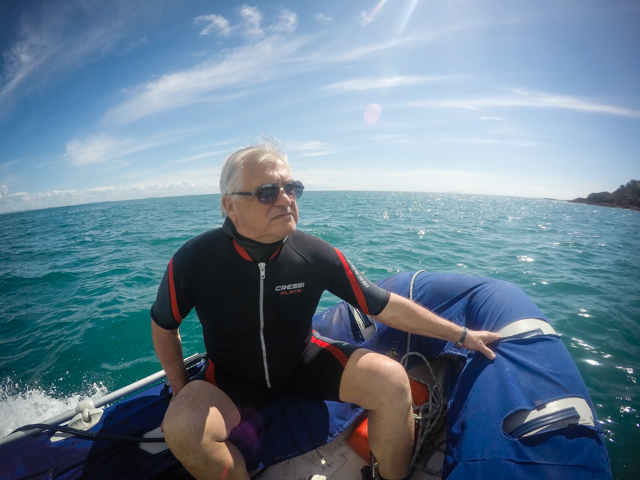

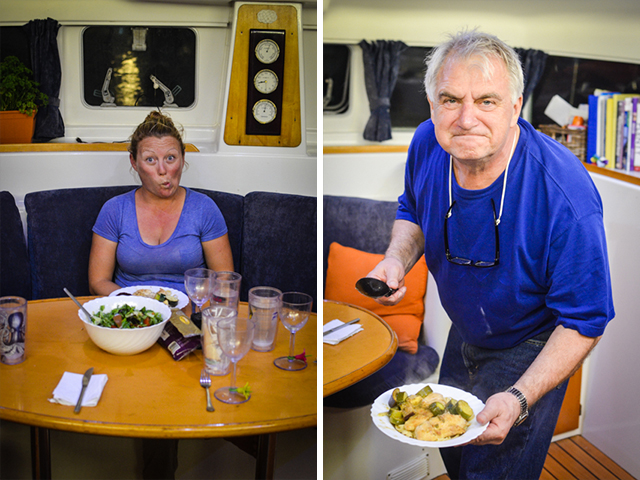
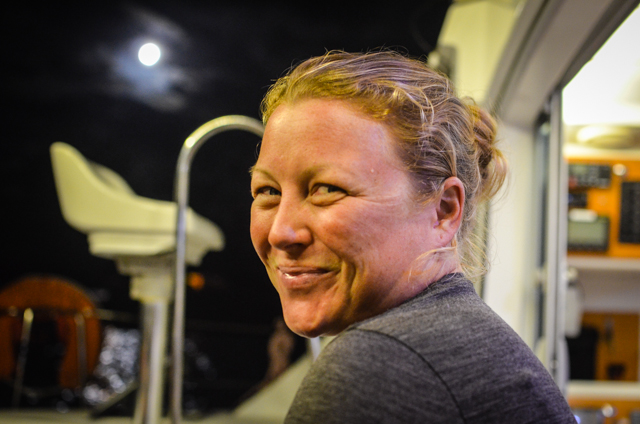

In the morning we motored in a light headwind to Rangitoto, a volcanic infant right in the mouth of Auckland Harbor. After dragging dinghy up the landing ramp, we tromped a few hours through the sharp scoria to the summit. There were more tui birds than we could count on our hike. The chortling ramble of their calls reminds me of R2-D2. In the late afternoon we made the summit, rewarded by the sixty meters deep crater lined with climbing vegetation and the panoramic views of the Hauraki Gulf. Rangitoto also has some neat lava tubes that we explored with head lights before heading back to the boat. Breaks in the earth let the pseudo-spelunker hike through passages melted out by lava tendrils only five hundred years ago when the bulk of the island was formed. Tubular.
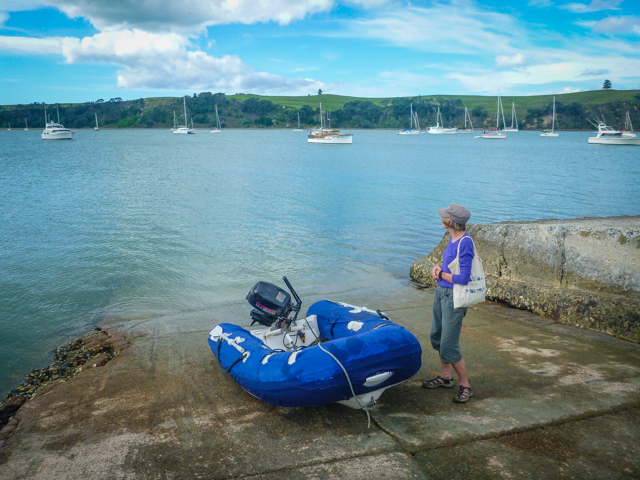
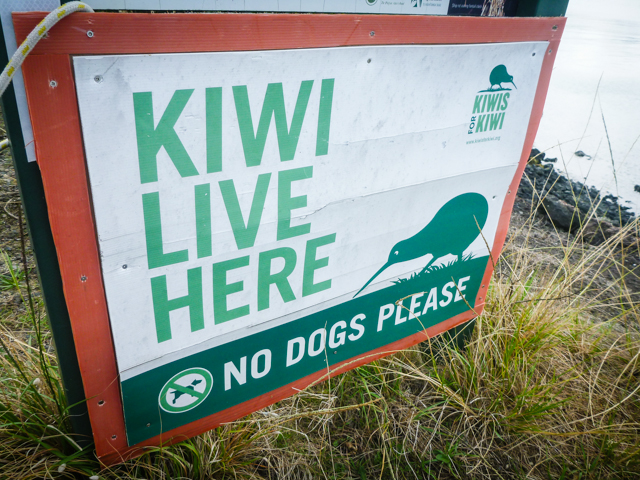
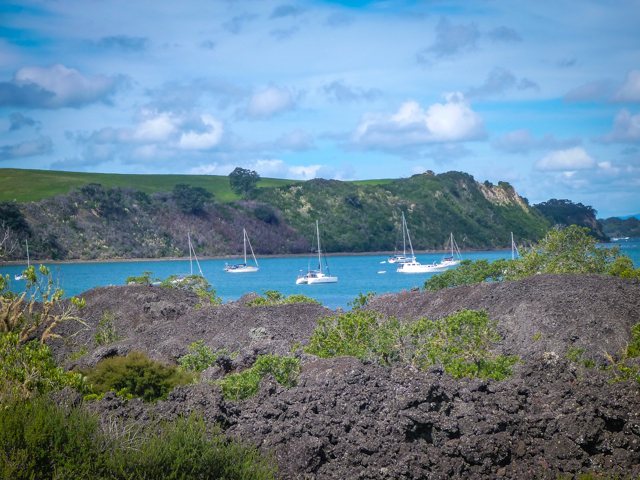
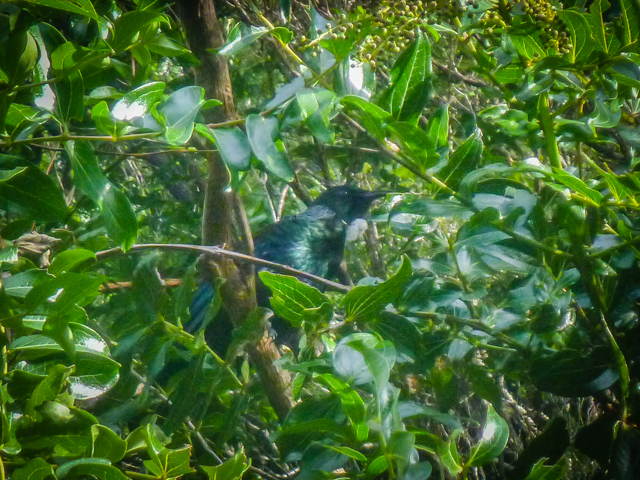


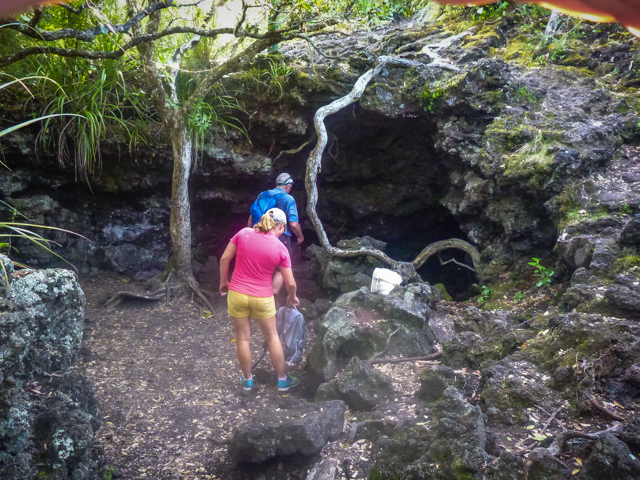
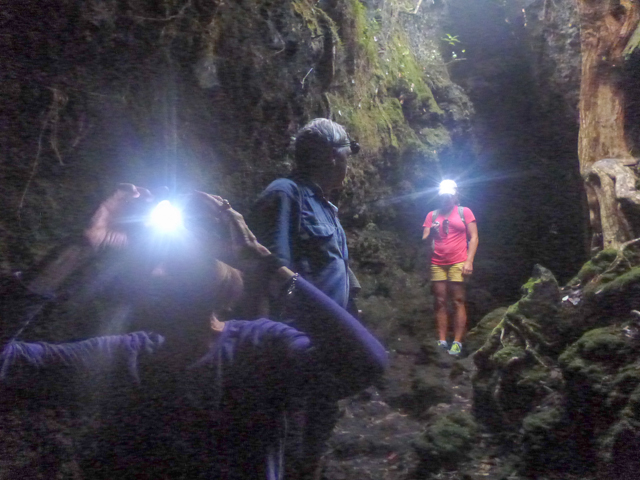
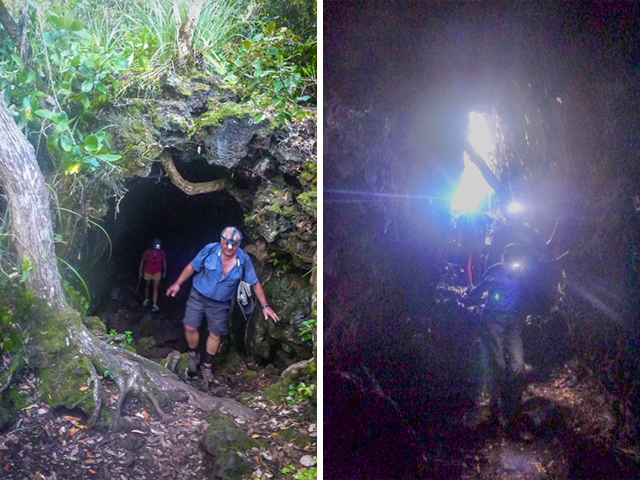
Even had an owl sighting on our hike back to the boat. This little guy is a New Zealand native called a Morepork. I’ll have some more… pork! Gotta love that name.
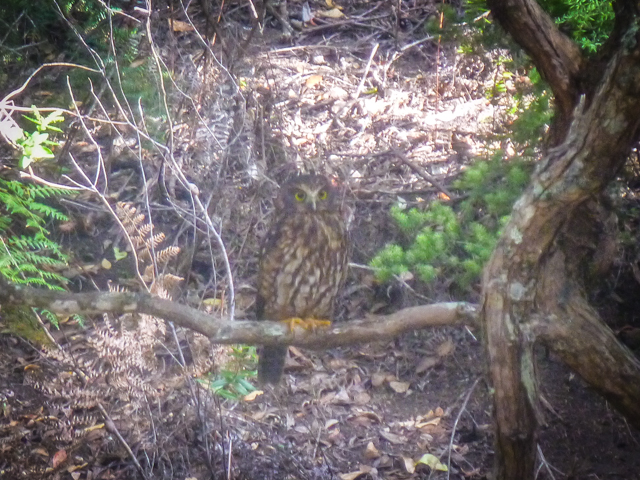
In the morning we hauled anchor and sailed back under the Harbor Bridge in Auckland. New Zealand had been voting on a referendum to change the nation’s flag. For the last months the bridge has sported both the current flag and the new proposed banner, but as we rode the tide in only the old Union Jack flag flew. We are certainly creatures of habit. Back at Hobsonville Marina we rustled up some hot showers and lunch before my padres took off to the airport. It’ll be a long trip back home for them. Their transportation home to Charlevoix will include a sailboat, ferry, bus, several airplanes, and a long car ride. We have some fanatically supportive parents to come so far to see us. We were so happy that we got to explore New Zealand together!




